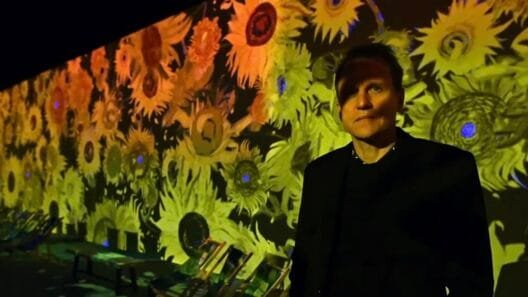As we all know today, automobile headlights are needed for safety and visibility. In fact, we couldn’t comprehend driving without the ability to go full-beam at the flick of a switch. But when looking at BMW1 series headlights, it’s difficult not to see them as an artistic centrepiece.
The journey of headlight technology wasn’t as straightforward as you may think, with it having to evolve from very rudimentary beginnings.
The Flickering Acetylene Lamps
Remember, vehicles are old, and they weren’t exactly using electricity to its full advantage (though, we should remember that there are examples of EVs as early as 1828). Generally, though, vehicles relied on rudimentary methods for lighting, and many early automobiles used oil lamps borrowed from horse-drawn carriages.
Of course, these were dim and would often go out. The late 19th century saw the introduction of acetylene gas lamps, which essentially burned acetylene gas generated by combining calcium carbide with water. Drivers had to light the lamps manually, but the flame was brighter than oil. It was still susceptible to wind and rain, though, but because early cars were still a novelty, they were mostly used in the daytime. So, it didn’t matter too much.
The Electric Revolution – The First Electric Headlights
Electric headlights kicked in around the turn of the 20th century. But, it wasn’t as if one company had the idea, and everyone rushed to it. Instead, adoption was slow, in part because vehicles lacked generators and batteries so powering the lights was a challenge.
Columbia Electric emerged as a pioneer in this regard, with it doing a good job at integrating electric lights into some of its vehicles. These early electric lights used incandescent bulbs. Of course, they were way brighter than acetylene, and generally more reliable (i.e. didn’t blow out in bad weather). This was a big step because it opened up the door to nighttime driving more, which also had the impact of people travelling and commuting from further away.
Sealed Beam Headlights – Standardization and Safety
As summed up nicely by AUTODOC, “Driving safety and comfort largely depend on the headlight intensity. Therefore, every car owner must monitor their condition”. As such, while electric lights were better than gas, they still had a flaw at the time: They produced glare.
This blinded oncoming drivers, and it really showed that strong lighting doesn’t automatically equal better safety. In fact, it could lead drivers into a false sense of security.
The need for a standardized solution was clear, and the sealed beam headlight arrived in the late 1930s. It was a revolutionary design with a filament reflector and lens combination into a single unit.
This provided better beam control, not to mention improvements in durability. The United States made sealed beam headlights mandatory in 1940, and safety skyrocketed. In fact, this was just the beginning of a whole host of driving laws and standardizations that would radically change the industry for the better.
Halogen – Brighter and Whiter Light
Unsurprisingly, those sealed beam headlights had their own limitations and were not the final solution. Their light output was modest, nor did they last very long. A new technology came about in the 1960s which saw European automakers begin to use halogen headlights.
These lamps used a halogen gas cycle which would extended the filament’s life and allowed higher operating temperatures. The result? A much brighter and whiter light, with visibility greatly improved.
Drivers could see farther and react quicker than they ever have before. Very quickly, these become standard in Europe, and soon spread around the world due to their undeniable performance.
HID and Projector Lenses – A New Era of Precision
You would have thought that by the 1990s, we would’ve settled into a mature headlight equilibrium with no major changes needed… But no, 90s saw yet another leap forward with High-Intensity Discharge (HID) headlights.
Also known as Xenon headlights, they offered a dramatic increase in light output. They were also more efficient than halogens and were produced with a distinctive blue-white hue. Projector lenses often paired with HID lamps to create precise beam shaping, with very minimal glare. These began on luxury vehicles, but soon tricked down into the mainstream by the turn of the millennium. One impact it had was to create sleeker designs due to their compactness, and this radically changed car aesthetics. In some ways, headlights were the key differentiator for luxury brands.
LED and Laser – The Future is Bright
LED headlights are now at the forefront because of their incredible energy efficiency and long lifespan. They also provide a ton of design flexibility, meaning that automakers are now using them to create distinctive lighting signatures. Plus, customers can customize them.
Adaptive headlights are also a recent innovation, with systems adjusting the beam patterns based on the driving conditions. In other way, it’s an automated headlight. They respond to speed, steering angle, and oncoming traffic.
| Technology | Years in Use | Brightness (Lumens) | Energy Efficiency | Lifespan (Hours) | Colour Tempreture |
| Acetylene | 1880s-1910s | 67-200 | Very Low | 7-21 L/hour consumption | Warm Yellow |
| Electric Incandescent | 1900s-1940s | 75,000 cd @ 10° | Low (10% efficient) | 800 | Warm White |
| Halogen | 1960s-Present | 700-2,100 | Moderate (30% better than Incandescent) | 450-1,000 | 3,000K |
| HID/Xenon | 1990s-Present | 2,800-3,500 | High (35-85W output) | 2,000-3,500 | 4,000-6,000K |
| LED | 2004-Present | 3,000-5,000 | Very High (90% more efficient than halogen) | 30,000-50,000 | 5,800-6,000K |
Above is a table to summarise the technological changes, putting into numbers the genuine improvements we have benefitted from.







